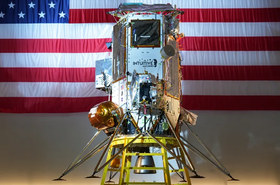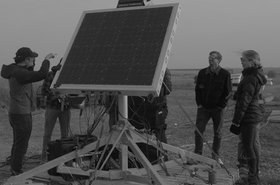Intelsat has signed a deal to lease capacity on Eutelsat’s OneWeb satellites.
The company recently announced that it has signed a new multi-year, multimillion-dollar agreement partnership with Intelsat on its OneWeb Low Earth Orbit (LEO) constellation.
Commencing in mid-2024, the deal is valued at up to $500 million over seven years, with a firm commitment of $250m (including a previous $45m deal signed in March 2023), with options of a further $250 million by the end of the period.
The companies said the deal will allow Intelsat to combine OneWeb’s LEO Network with its existing GEO and terrestrial networks to offer connectivity solutions to its customers.
"Over the past couple of years, Intelsat has leveraged our partnership with the Eutelsat Group to initiate our strategy of enabling multi-orbit solutions in the commercial aviation and government markets,” said Intelsat CEO Dave Wajsgras. “Today’s announcement takes that partnership to a new level, enhancing our ability to offer new, true multi-orbit services and solutions across our portfolio of customers and business segments.”
Eva Berneke, Eutelsat Group CEO, added: “This expanded partnership with Intelsat represents a strong vote of confidence in the capabilities of the OneWeb satellite constellation, today and well into the future, as well as showcasing the necessity in today’s world for major satellite operators to be able to offer multi-orbit solutions to their customers.”
Intelsat said it will also cooperate with Eutelsat in the development of the next generation of OneWeb satellites, providing direct design and functionality input.
This week saw NEC XON, NEC Group’s Africa-focused ICT integrator – sign a multi-year, multimillion-dollar deal with Eutelsat for connectivity capacity on the OneWeb Low Orbit constellation.
Kymeta has also started shipping the world's first multi-orbit terminal for use on the combined Eutelsat GEO-LEO network, the Osprey u8 HGL.
Intelsat operates and maintains over 72 GEO satellites today (52 Intelsat and 20 customer-owned). The company is reportedly considering investing in developing a MEO satellite fleet.
In other recent satellite news:
– SpaceX is reportedly building a network of spy satellites for the US government. Reuters reports the company is building ‘hundreds of satellites under a classified contract for a US intelligence agency.
The $1.8 billion contract was signed in 2021 with the National Reconnaissance Office (NRO), an intelligence agency that manages spy satellites.
– SpaceX recently said it has reduced latency on the network by 30 percent, and is aiming to reduce it further to sub-20ms.
– The Federal Communications Commission (FCC) has approved a SpaceX request to fit 7,500 of its planned Gen2 satellites with E-band frequency capabilities.
– SpaceX plans to offer inter-satellite laser link capacity across its network to other satellite operators in a service that will reportedly be called “Plug and Plaser.”
– Starlink was used by TV and streaming production company MSTV to stream a soccer game between Israel and Poland.
– MTN is working with Omnispace to explore the use of S-band for satellite services to expand the African telco’s portfolio of wireless services.
– Hispasat has tapped Infinite Orbits for a potential satellite life extension mission. The companies are exploring using Infinite’s Endurance satellite life extension solution for a GEO satellite.
– AST SpaceMobile may have to operate its direct-to-cell satellites in a lower orbit with less signal power than originally planned, according to a recent ITU/FCC filing.
- Lynk Global has launched two more direct-to-cell satellites into orbit.
– Astranis is to launch a dedicated MicroGEO communications satellite for Argentina in partnership with LATAM ISP Orbith.
– The US Army has signed a deal with Palantir which will see the technology company provide a number of prototype mobile ground station systems. The $178.4 million deal covers the development of 10 Tactical Intelligence Targeting Access Node (TITAN) prototypes, including five Advanced and five Basic variants.







